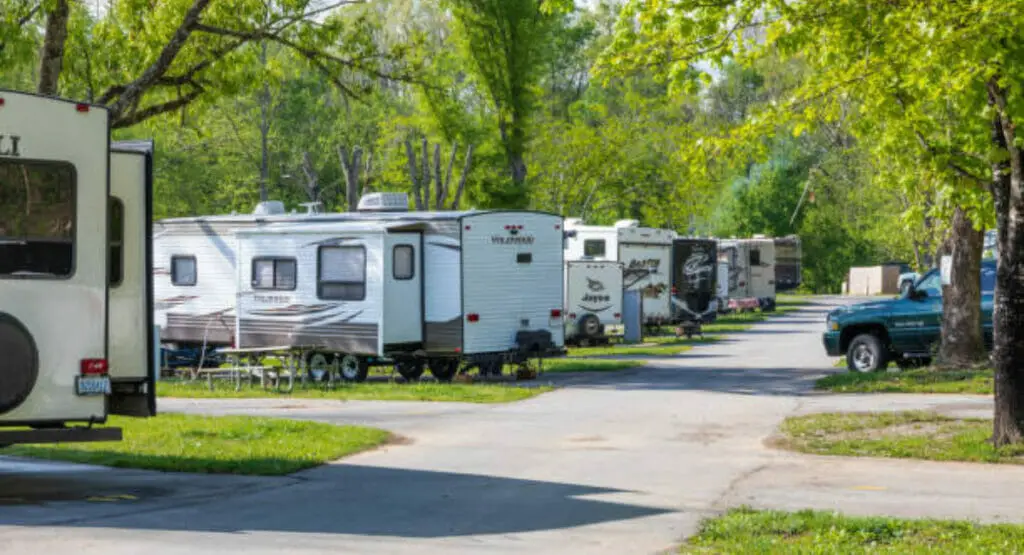A fresh water drain valve replacement is an essential maintenance task that can guarantee the efficient operation of your RV’s plumbing system and guard against leaks and damage from standing water. The process is fairly simple, so most RV owners with basic plumbing knowledge can finish it. Our guide will walk you through the procedure for how to replace RV fresh water tank drain valve, which involves shutting off the water supply, emptying the fresh water tank, removing the old valve, replacing it, reconnecting the water supply, and testing the new valve. It won’t take long to replace the fresh water drain valve on your RV if you have the correct equipment and some basic knowledge.
What Is Rv Fresh Water Tank Drain Valve
An RV’s fresh water tank may be drained via a valve that is found close to the vehicle’s bottom. The kitchen sink, shower, and toilet are just a few systems used by the RV’s fresh water tank to store and feed. While the tank has to be cleaned or when the RV is being winterized, the drain valve is utilized to empty it. The valve is often turned counterclockwise to open, and it may be found next to the water heater or pump. It is important to note that the location and usage of the drain valve may vary depending on the make and model of the RV. There are various reasons why you may need to repair an RV fresh water drain valve:
Leaks:
If the valve leaks, it will need to be replaced to avoid further damage to the RV.
Age:
Over time, the valve may get worn or rusted, making it harder to turn or resulting in leaks. To ensure proper operation, it is advised to replace the valve.
Upgrades:
To ensure compatibility, you may need to replace the valve if you are replacing parts in your RV’s water system.
Damage:
If the valve is damaged, it will need to be changed to guarantee that it performs correctly.
Difficulty to operate:
If you find it hard to use the valve, it could be time to replace the valve.
Steps To Replace Rv Fresh Water Tank Drain Valve
To replace an RV fresh water tank drain valve, you will need to follow these steps:
Step 1: Locate the valve
The freshwater drain valve is usually located near the bottom of the RV, often near the water pump or water heater. This is because the valve is used to drain the fresh water tank, which is typically located near these other components. However, it is important to note that the location of the valve may vary depending on the make and model of the RV.
Step 2: Switch off the water supply
Before you begin, make sure you turn off the water supply to the RV to prevent any leaks. To do this, you can shut off the RV’s main water supply valve or close the RV’s water supply valve.
Step 3: Drain the fresh water tank:
Open the freshwater flow valve to let the water in the tank drain out. Draining the water tank will also help you see if there are any other leaks or issues in the RV’s water system.
Step 4: Remove the old valve
Use a wrench to remove the old valve from the RV. Be cautious not to harm any of the surrounding pipes or fittings. When removing the valve, it’s vital to pay attention to the orientation of the valve and how it is attached to the plumbing, as you will want to install the new valve in the same way. Once the old valve is removed, have a look at the threads; if they are broken or rusted, you may want to replace the pipe as well.
It is also crucial to make sure that you have the right size wrench for the valve you are replacing to avoid stripping the threads or injuring the valve.
Step 5: Install the replacement valve
The replacement valve must then be installed after the old valve has been removed. The replacement valve should be installed in the exact same location and direction as the original valve, using the appropriate fittings and hardware.
Make sure that the new valve is put in the appropriate direction and that the threads match the old pipes or fittings. With care to avoid damaging the valve or the nearby pipes, tighten the valve with the wrench.
It is crucial to use the right kind and size of fittings and hardware when installing the new valve to guarantee a tight and secure fit. Also, be sure to use Teflon tape or pipe thread sealant on the threads of the valve and the pipes to avoid leaks.
Step 6: Turn the water supply back on
After the replacement valve is fitted, turn the water supply back on to the RV and check for leaks. To turn the water supply back on, you either open the main water supply valve to the RV or open the valve on the RV’s water supply line. If your RV has a water pump, turn on the main power supply to the water pump as well.
Once the water supply is switched on, you may check for leaks in the system. Inspect the new valve and all the fittings and connections for any signs of leaks. Also, inspect the surrounding area for any water on the floor or any puddles.
If there are no leaks, you may fill the fresh water tank and test all the faucets and appliances in the RV to confirm that the water is flowing properly.
Step 7: test the valve:
Finally, it is important to test the new valve to ensure that it is operating correctly. After turning the water supply back on and checking for leaks, you should open and close the valve to verify that it is functioning properly.
If the valve is leaking or not working properly, it must be fixed right away to prevent further harm to the water system of the RV. It is also a good idea to replace the valve during routine maintenance or while updating the RV’s water system.
conclusion
In conclusion, replacing an RV fresh water drain valve is a relatively simple process that can be done by most RV owners with some basic plumbing skills. If you are unsure about replacing the valve, it is typically best to consult the manufacturer’s instruction manual or a professional. It is very important to understand that the specific procedures may change depending on the type of valve you are installing and the make and model of your RV. If you have any questions about a particular step of the procedure, it is usually best to consult the manufacturer’s instruction manual or a professional. You can help ensure that the valve is functioning properly and avoid any water leaks and damage to your RV by routinely inspecting the valve and testing it under various water pressure scenarios.



